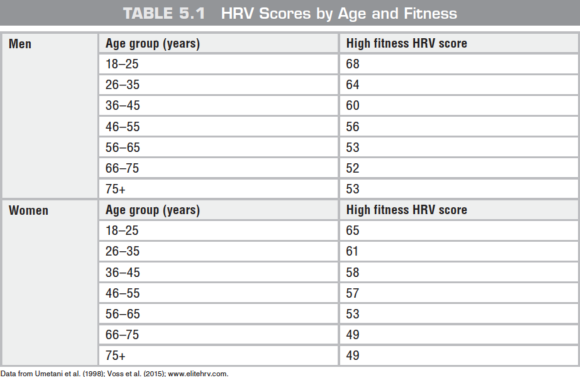Learn more about recovery with heart rate variability (HRV)
This is an excerpt from Heart Rate Training-2nd Edition by Roy Benson,Declan Connolly.
Thanks to new understanding of data about cardiac health, heart rate variability (HRV) is a new tool that can provide athletes and exercisers more insight into recovery. In the past, an electrocardiogram (ECG) machine was needed to measure HRV by tracing the electrical activity of the cardiac muscles to measure the actual interval between heartbeats. But now the cheaper technology of chest and wrist heart rate monitors and new apps for smartphones make measuring and using HRV possible and more practical.
Cardiologists have long used HRV, variation in the interval between heartbeats, as a measure of cardiac health. HRV scores range from 0 to 100, with low scores (little variation) indicating poor health, and high scores (greater variation) reflecting good health. HRV scores tend to peak between 20 and 30 years of age and decline thereafter. Average HRV scores for healthy individuals tend to be about 60, but again it is age specific.
So, what does this mean? Generally, HRV indicates the body's health, fitness, and ability to handle a workload. Low HRV indicates poor fitness and the body's inability to adapt to stress, whereas high HRV indicates fitness and that the body is able to tolerate stress or has recovered from a previous stressor. During your recovery periods, when you are not working out and while sleeping, you want to see variations in your resting heart rate response. Tracking this variation in the intervals between heartbeats provides useful data to be used in conjunction with your average resting heart rate. Measuring HRV is becoming widely used in both clinical populations and among competitive athletes and is helpful in determining how well the body has recovered from training. Although it requires a little more daily analysis, it is worth the effort because it allows you to more effectively adjust your training sessions depending on whether you are recovered or not.
Table 5.1 shows HRV across the lifespan. The data were adapted from several sources that include athletic and nonathletic populations. Calculating HRV is not straightforward, so we recommend investing in a system that will do the calculations for you (such as the Oura sleep and activity tracking ring).

SHOP

Get the latest insights with regular newsletters, plus periodic product information and special insider offers.
JOIN NOW


